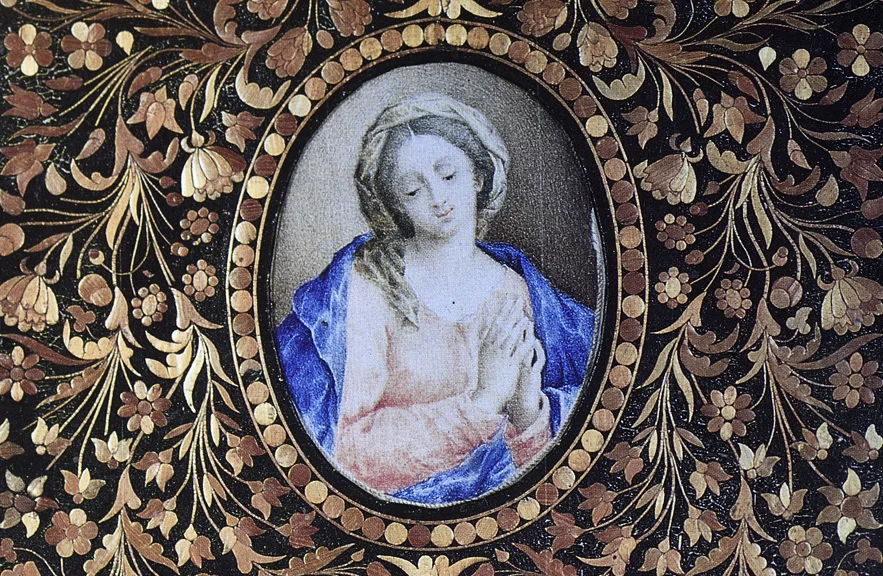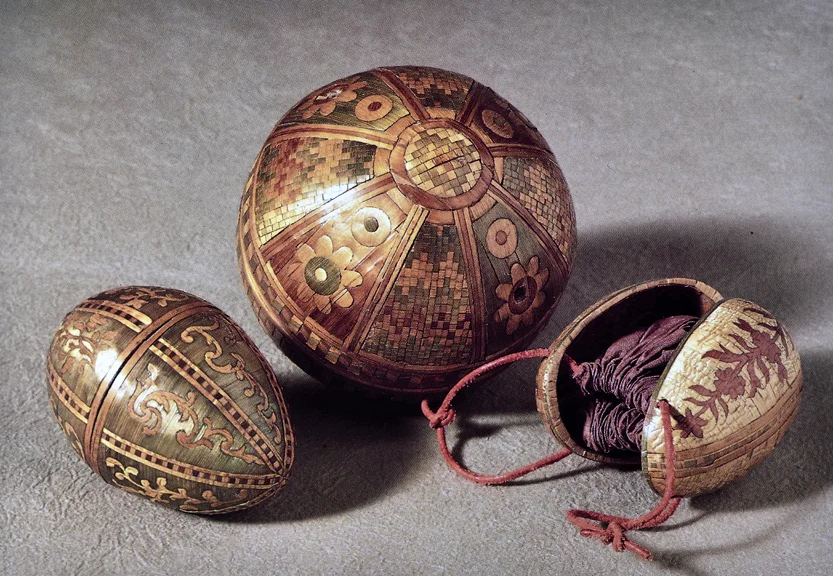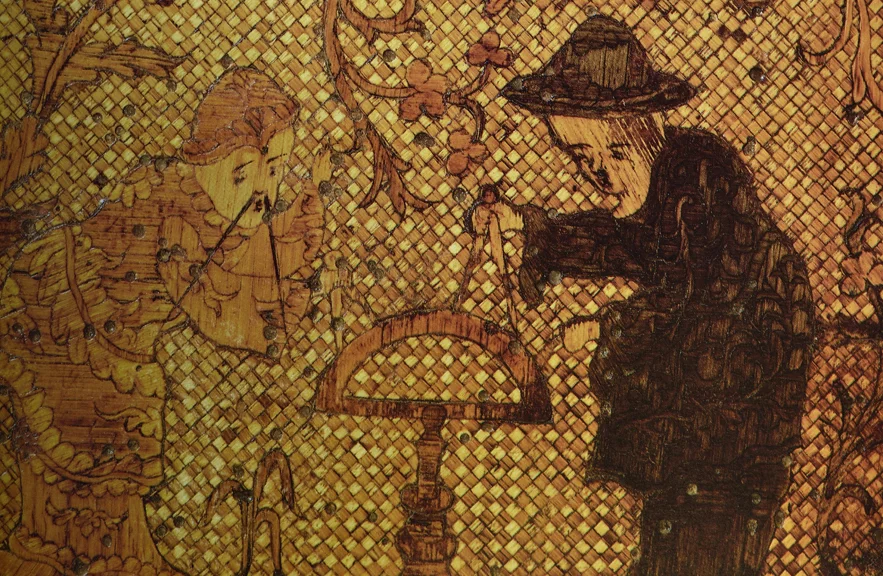We have a guest author this week: my father. I’ve written in the past about how the business he started when I was a child has powerfully influenced my creative life, so it should come as no surprise that he is a wealth of knowledge and experience in many areas of artisanal crafts (Thailand and India posts). Here he has written a fascinating treatise on the art of straw marquetry for those who would like to go ‘under the skin’ of this noble art form so loved and respected in ‘Alexander Lamont’.
A Harvest of Design by Victor Lamont
Since ancient times, straw has been a symbol of fertility and the cycle of the seasons: one of harvest and re-growth. There are records of straw in the Egyptian pyramids, in Ancient Rome and in French cave drawings. Straw from grasses and cereal crops appear to have always been a part of the basics of everyday life, of food, clothing and shelter. It has been used for building homes, making furniture and mats, straw hats, coats and shoes, baskets and other storage containers. Straw has also been used in artwork for many centuries: Easter eggs and decorative items from the former Yugoslavia, Hungary, Belarus and Ukraine in Eastern Europe; boxes and pictures from Bangladesh, India, Pakistan and the Philippines are just a few examples.



Straw marquetry is the craft of forming a decorative panel of straw veneer and applying it to a structure or by applying it directly onto a substrate. There are different forms of marquetry, including inlay, onlay and mosaic. At Alexander Lamont we have added the gilding, gessoing, silver-plating and lacquering of straw as our own innovations in this technique.
The origins of straw marquetry are not clear, but by the 1600s, it could be found throughout much of Europe. Italian marquetry dating from the 1600s can be seen in some museum collections, and there are records of nuns in Switzerland making items with straw. In England, the earliest reference is found in the 1677 publication The Natural History of Oxfordshire, where the work of straw marquetry artisan Robert Wiseman is mentioned. In France, the town of Le Puy en Velay is believed to have been a centre for the production of straw marquetry, but possibly the most well known historical period dates from the Napoleonic Wars (1793 to 1815) when prisons were built in England for the French and Dutch prisoners of war. To relieve the prisoner’s boredom, they were allowed to produce items from materials at hand and sell them in a market next to the prison. As straw was readily available, many items were made from it, including bookmarks, boxes, baskets, and large scale model ships (many prisoners were sailors). The most famous of these prisons, Norman Cross, has a museum with one of the best collections of straw marquetry items of the time.

Straw marquetry was also popular in France as an architectural feature during the reign of Louis XV. The aristocracy, attracted by its sophisticated appearance, kept the major workshops in the Palais Royal and Faubourg St. Antoine districts of Paris very busy. However, because of the complexity of producing straw marquetry, it slowly decreased in popularity and its use became confined to smaller objects such as boxes.

It has been said that the French fashion designer, Paul Poiret was responsible for reintroducing it into high society when he covered the sides of his barge “Amour” with it during the Decorative Arts Exhibition in 1925. Later, French decorators of the era, André Groult and Jean-Michel Frank, began using it to transform rooms into luxurious caskets, prompting Jean Cocteau to tell Jean-Michel Frank that he was putting Parisian Society “sur la paille” (literally “on the straw,” or ruining it financially).


All historical pictures above are taken from the book ‘Marqueterie de Paille’ by Lison de Caunes; a highly respected straw artist based in Paris.
From Unpretentious to Sophisticated
From a strand of straw a beautiful designed work can emerge. To make straw marquetry, untreated bundles of rye straw are collected. The stem of straw must be split, flattened, softened and scraped into a flat ribbon. It is then glued edge to edge to a paper or plywood backing until they form an even surface, and shapes are cut from the sheet. The straw, naturally covered with a varnish formed from plant silica, is impermeable to water and very durable. The flattened straw is naturally shiny and takes on different hues as light strikes it. Traditional marquetry design elements include fans, suns, and three-dimensional cubes.


The number of pieces and the effort it takes to assemble the complete work can illustrate the preciousness of the material. For walls covered in the simplest lines of straw marquetry, about 450 individually selected pieces of straw placed edge-to-edge and side-by-side are required to cover a square meter. This can take three days for one skilled person to finish – much longer with more complex designs. This time also does not include preparation of the straw which takes at least as long. We are the only company in the world to receive our straw in an un-dyed, un-finished state. This allows us to wash, dye and prepare the straw to exacting specifications rather than relying on outside preparation and limiting colour tones. A future blog post will tell this story in full.
Ancient Material in a Modern Context
In a time when most people are disconnected from farming and the cycle of planting and harvesting, straw may not have as much symbolism. But it is still used today in the creation of the basics of food, clothing and shelter. Alexander Lamont imports French straw, and is the only workshop in Asia using this time-honoured material. Lamont’s straw marquetry skill is used to create original and highly crafted lights, accessories and furniture that capture the luminosity and elegance of this humble material.




